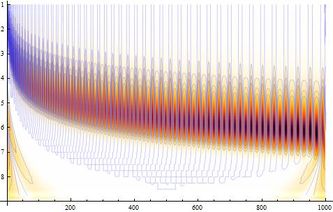Mathematica
Mathematica is a mathematical software program designed to enumerate the computational universe in the most unintuitive way possible.
History of Mathematica[edit | edit source]
Mathematica was originally conceived by the computer scientist Konrad Zuse during a particularly troublesome bowel movement in 1975. He later discarded the idea claiming, “Only a raving animal frothing at the anus would attempt to understand the world this way.” This piqued the interest of Stephen "Ace" Wolfram, an ambitious young VIP committed to immortalizing himself through dysfunctional software. After phasing Zuse out of reality with his subconscious, Wolfram conceived and developed the software singlehandedly in a vacuum and released it at the generous price of $2495.00.
Mathematica was initially met with a cold response from the science community, as no one knew how the fuck to use it. "Why are function arguments wrapped in brackets instead of parentheses? Aren't those more natural?" asked Jürgen Schmidhuber, a German computer scientist. After phasing Schmidhuber out of reality with his subconscious, Wolfram wrote a manual describing the baffling syntax and "notebook" interface of Mathematica. Fearing for their lives, all of the world's scientists quickly adopted it and began creating unintelligible visualizations for their data.
Subsequent versions of Mathematica were developed by Wolfram and a team of worthless peons who merely basked in his genius. These updates included features no one wanted, such as:
- Optimized Groebner basis functions
- .NET Framework integration
- The Mexican Hat Wavelet
- Slide Shows
- Percentage of arable land statistics for Brazil
and left out desired features such as:
- Ctrl-Z
Today Mathematica is on version 8, and has expanded its demographic to artists, lawyers, hobbyists, composers, and other over-privileged individuals who don't understand math but want to make colorful polygons.

